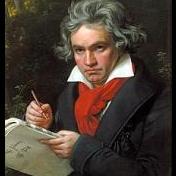You know how I have been composing for a long time without finishing a sonata? Well, that has changed. This sonata that I finished is fourth in order of composition but it is the only one I have finished so far. So that is why I have Piano Sonata no. 4 in the title.
I first posted this sonata on Musescore.com as soon as it was midnight and on Mozart's birthday, I got a huge spike in views and followers because of that 1 piece. They all said that it was great and that my style and Mozart's themes blend in really well in this sonata. You won't find it on my Musescore account anymore because I had to delete it(I can't afford the pro membership so to make up for that, I delete pieces that are either really good and have been uploaded to YouTube or that haven't gotten many views or that are incomplete).
Before the deletion of my sonata from my Musescore account, I uploaded it to YouTube. So it is one of my videos now. Now for the context under which I composed this sonata.
Context
It was a few days after Christmas and I noticed that Mozart's birthday was fast approaching. I figured that this would be as good of a time as any to compose a sonata. So I did and I dedicated the sonata to Mozart, the composer that inspired me to start composing at a young age. I called this, the Compose a Sonata within a Month challenge(pretty self explanatory there). Also, because I was borrowing from Mozart's style, I went with the flow, just like Mozart did when he composed.
Movement by Movement detail
The first theme and the transition of the first movement, both sound like they could be part of a Mozart sonata. In fact, the transition has similarities to the transition in the K545 sonata. To add some contrast and also to reinforce the birthday context of the sonata, I based my second theme off of Beethoven's Ode to Joy theme. I modified it slightly, especially the left hand to give it that Mozartian touch to it.
The development section is where I go a bit wild with it. I present the Ode to Joy theme followed by its inversion(both melodically and in terms of the hands switching roles). I then have short motifs from other parts of the movement such as the closing theme. And I use a long modulation chain to go from D minor(closely related to the F major of the closing theme) to Bb major. Here it is:
D minor -> D major -> G major -> C major -> F major -> Bb major
In the C major section, I do some 2 part counterpoint. The F major section, I leave unharmonized until the final 2 chords of the development section.
The recapitulation is basically the exposition ad verbatim, except it is all in Bb. Because of this, there is a change of register when the Ode to Joy theme comes back in Bb.
In the second movement, I focused more on melody. It ended up being in a compound ternary form where I have this structure:
AA'BB'CC'AA'
The AA', etc. are representing that those sections are repeated but slightly different. The B and C sections both make up the second section of the ternary form and thus the middle section is in binary form. But I focused more on melody than form with this second movement.
The third movement, I decided to have it be in sonata-rondo form to give a more dramatic ending. There is like 1 measure of C minor in the B section. This hints at my more serious use of minor keys in the development section of the rondo. You'll notice that I do use a famous Mozart motif in my rondo. That is the one from the first movement of Symphony no. 40 except I only preserve the note values. The rhythm in my sonata is quarter, eighth, eighth. In Symphony no. 40, it is eighth, eighth, quarter. In other words the rhythm in my sonata is retrograde(or you could also think of it as being the same but starting on weak beats instead of strong beats).
Feedback wanted
Here is my sonata, it is a 15 minute long composition.
What do you think of it? I had to make some invisible measures in Musescore to avoid a delay at the repeats.

